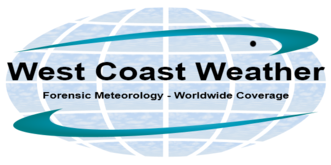How Midwestern blizzards are born
By Michael FaginGeneral Info, Poor VisibilityWith 0 commentsHow Midwestern blizzards are born. A Midwestern blizzard, the most common type, is born when a cyclonic, deep low spins next to a very cold, very high-pressured anticyclonic Canadian air mass while it pushes southeasterly into the upper Midwest. If the pressure gradient between the two air masses tightens, wind speeds increase. Moisture in the northwest quadrant of a swirling blizzard, which is characteristically warm at high altitudes, is circulated downward and cast to the surface in a substantial snowfall.
The coldest blizzards develop from Alberta Clippers, which typically track toward the Great Lakes. The wettest and windiest typically form off of eastern Colorado because their more southerly positioning allows for the formation of deeper central low pressure. Minnesota and the Dakotas receive the most, followed by the states immediately south and east of them. Moisture-laden nor’easters also bombard the east coast and can deliver massive blizzards if very high pressure and very low pressure air masses unite just right.
Even after the deep low that contains a blizzard passes and the snow stops, strong winds pushed by the trailing, dry region of high pressure typically continue to blow and redeposit what has already fallen. The same conditions seen during the blizzard can be recreated by a strong, persistent wind. The snow drifts assembled can be much taller than the snow’s average depth, which can further hinder travel. The trailing winds also chill roads and runways where snow has melted, making black ice.
Flights are seldom delayed due to light snowfalls but runways do need to remain reasonably cleared and deiced. Strong winds perpendicular to them can push off aircraft. Sometimes this can be avoided by picking a runway that’s at a different angle but the threat of slipping off is enhanced if snow and ice decrease aircrafts’ friction with the concrete.
Meteorologist Geoff Linsley
